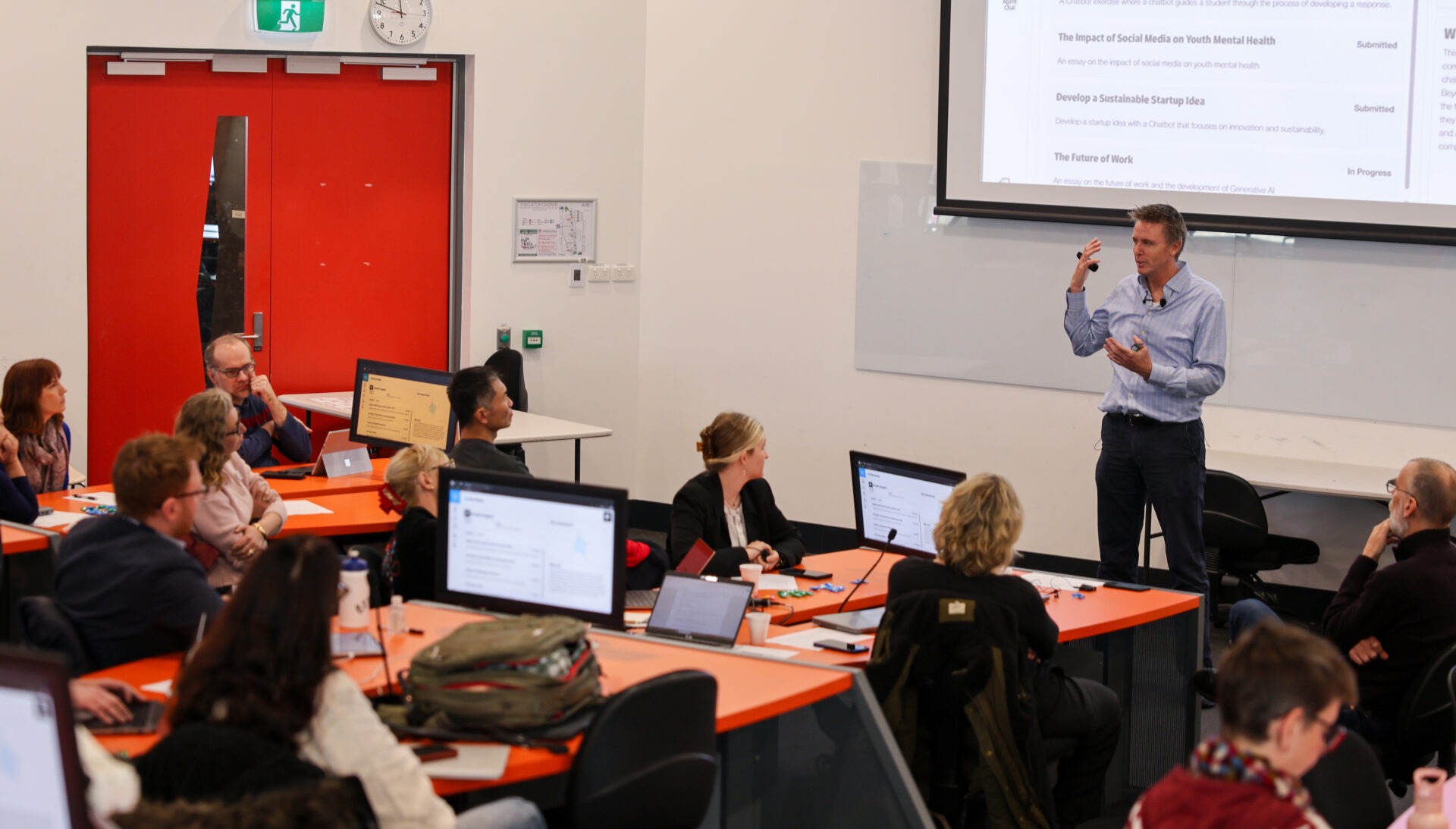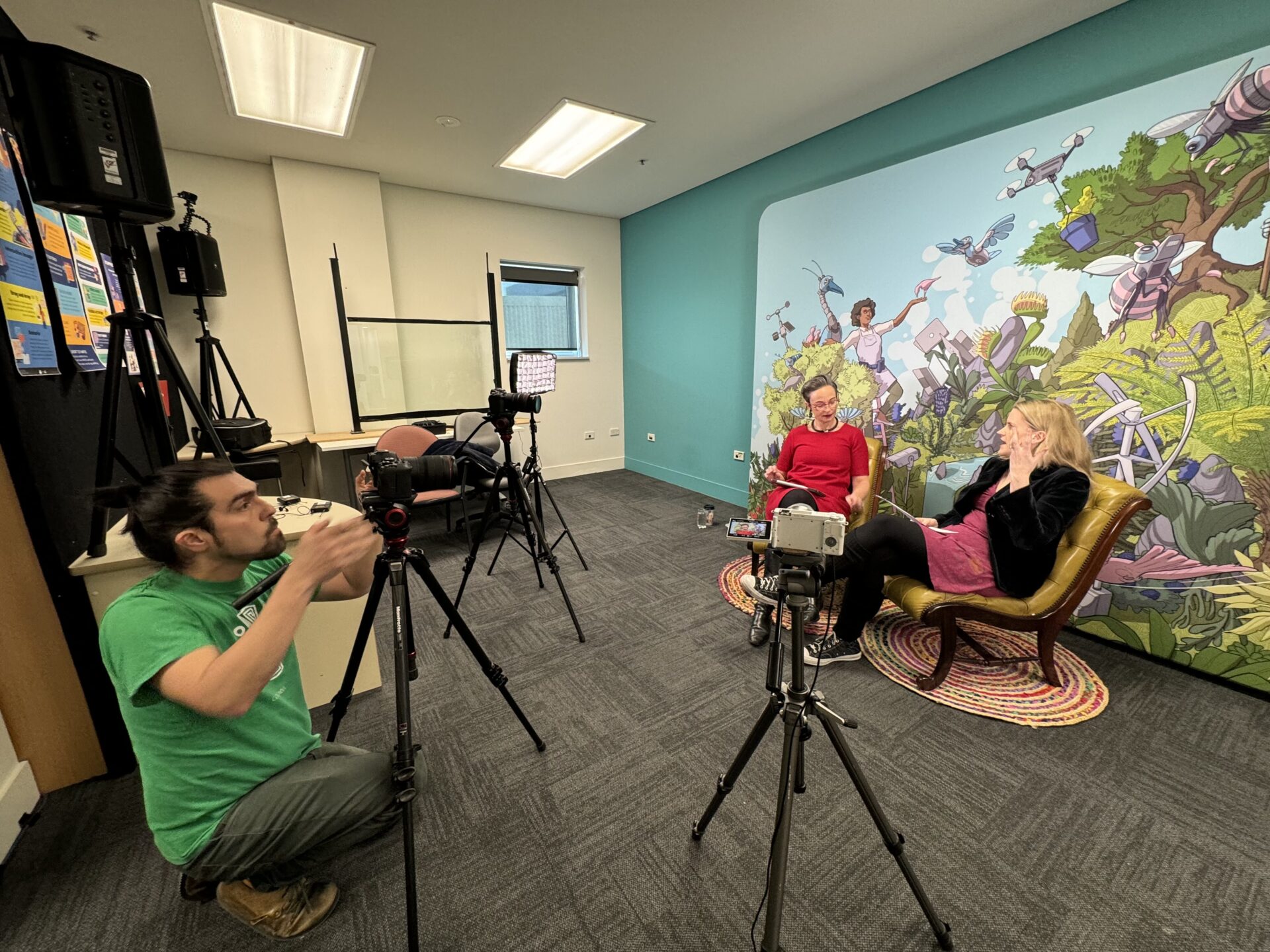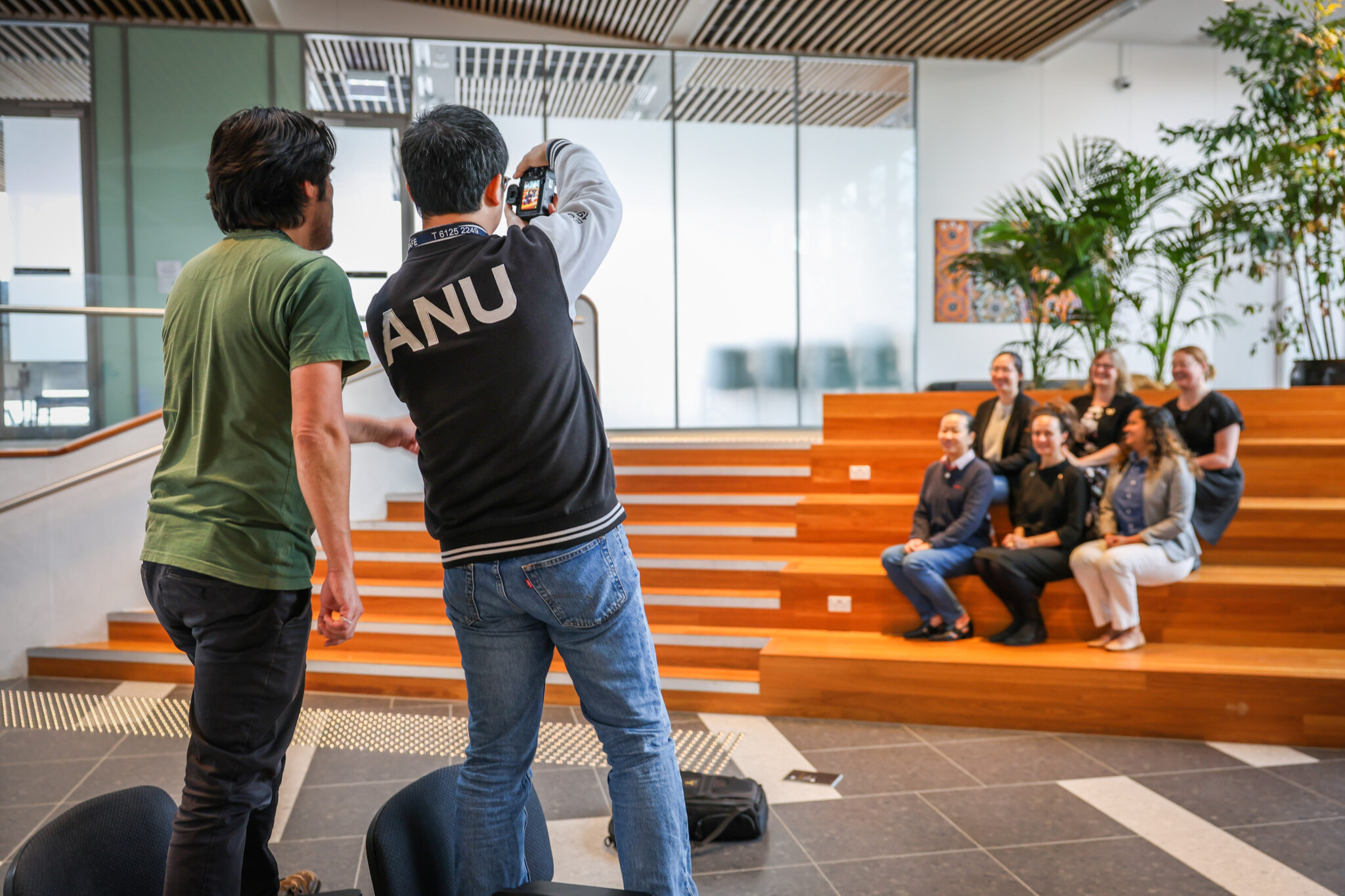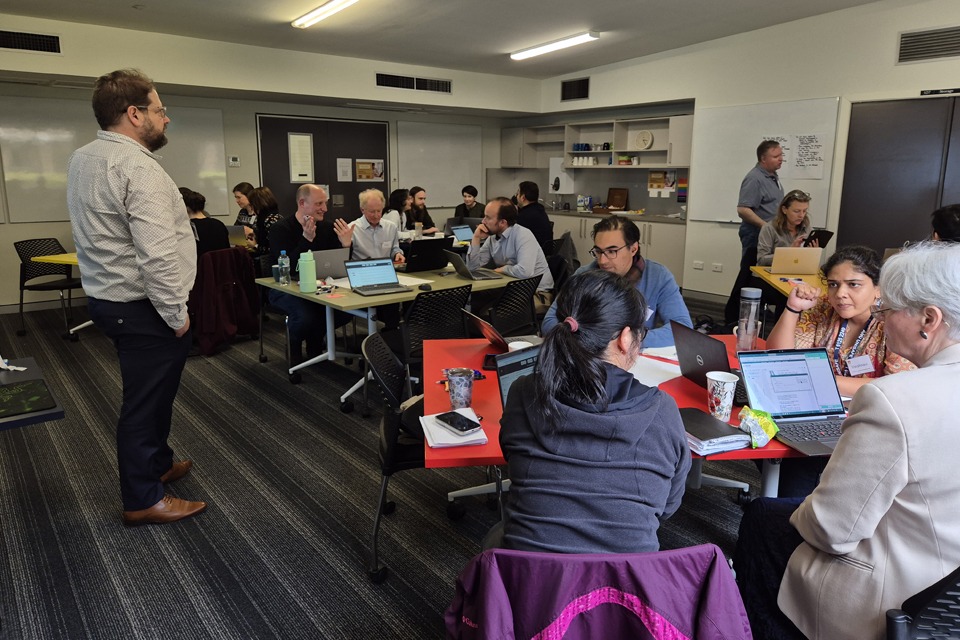In April, the AI in Health and Wellbeing Education grant team hosted two professional development workshops for College of Health and Medicine (CHM) staff. These workshops contributed towards achieving the grant’s goal of providing professional development and support for staff to a) explore using generative AI for efficient and effective resource development, and b) promote the use of generative AI by students in effective, responsible and ethical ways.
The first workshop was titled “Embedding the responsible use of generative AI in the classroom”, with a focus on designing activities for student use of AI to facilitate learning.
Project co-lead Associate Professor Alex Webb shared a draft of the College’s guidelines for AI use in learning and teaching, inviting feedback from attendees. Dr Danish Ahmad and Dr Steve Lee each presented a case study of how they are using generative AI in the classroom, discussing the positives and negatives and taking questions. A key takeaway was a need to provide instruction and training on prompting for tutors and students as a way to instil confidence. To address this, in the final session project co-lead Dr Julia Ellyard and CLT’s Leopold Zhou provided information on the basics of how to engineer an effective prompt for Microsoft Copilot (an ANU enterprise AI tool), highlighting the difference between short, vague prompts, and prompts that follow an effective formula (persona + context + task + format + exemplar + tone).
In the second workshop, “Using generative AI for the efficient creation of teaching resources”, it was time to get more hands-on with Copilot. Focussing this time on educator use of AI, Alex, Julia, Leopold and Associate Professor Helen Wozniak helped participants to have a go at creating two different types of resources: multiple-choice questions (MCQs) with feedback and images.
Educators within CHM frequently use MCQs for assessments. However, MCQs can be very time-consuming to create. By starting with the prompt formula provided in the first workshop, and refining further as needed, participants were able to quickly generate MCQs appropriate for their own unique needs. The importance of a strong initial prompt was soon brought to light, as participants found it challenging to get some elements of the output removed once they were already in play.
Next, participants had a go at generating images, for decorative and instructive purposes. As was expected, image generation proved generally less reliable than text generation. However, participants had success in generating less technical images, such as illustrative pictures of medical consultations.
For the grant’s next steps, identified CHM academics will design activities to integrate generative AI into their courses, with assistance from CLT’s education designers.
Further resource: Take a look at the AI quick start guide.
Hannah Simpson, Education Designer, CLT; Dr Julia Ellyard, CHM Fellow; and, Associate Professor Alex Webb.
Photographs by Tangyao Zhang, Multimedia Producer, CLT







